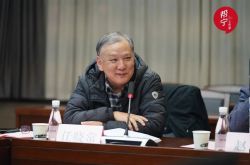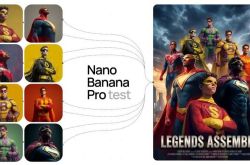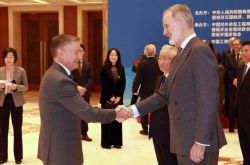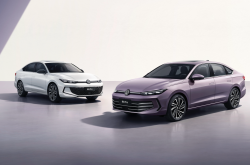Zuo Ya'an: Redefining the Core Competitiveness of Enterprises
![]() 11/26 2025
11/26 2025
![]() 543
543

"Five Suggestions for Shaanxi Automobile Group"
Author: Zuo Ya'an
Editor: Ge Bangning
Produced by: Bangning Studio (gbngzs)
I've been retired for 13 years now. Over these years, the automotive industry has seen its fair share of ups and downs, especially with the shift towards electrification and intelligence. The pace of technological change has been astonishingly rapid, necessitating a fresh look at what truly constitutes the core competitiveness of enterprises. Here, I present my five suggestions for Shaanxi Automobile Group.
First Suggestion: Implement Changes and Optimizations in Property Right Structure and Operation Mechanism
As competition in the automotive industry intensifies, stratification becomes inevitable. At the forefront, enterprise mechanisms emerge as a necessary condition.
These necessary conditions manifest in five key areas: decision-making efficiency and execution effectiveness; strategic determination; entrepreneurial authority; cultural inheritance; and talent marketization, globalization, and cross-sector integration. For instance, can traditional industries successfully integrate ICT (Information and Communication Technology) talent to achieve genuine marketization?
However, this is not sufficient on its own. The comprehensive qualities of entrepreneurs represent a sufficient condition. Together, they form the first tier of competition. Subsequent aspects, such as strategy, operational efficiency, human resources, and technological R&D, all stem from this foundation. With a robust enterprise mechanism and outstanding entrepreneurs, subsequent issues naturally resolve themselves.
Given these insights, is it feasible to implement more substantial changes in the property right structure and operation mechanism for new entrepreneurial platforms? Ideally, larger industrial structure optimizations should occur at the holding or enterprise level. While actions at the holding level are more challenging, greater efforts can be directed towards new ventures.
I've mentioned on several occasions that mixed-ownership reforms can vary in depth. Shallow mixing can clarify the interconnected responsibilities of state-owned assets. Although it may not lead to highly efficient decision-making, a small portion of private enterprise or social capital can oversee the larger portion of state-owned enterprises. In essence, the ultimate responsibility lies with the final asset owner, which is crucial.
As for deep mixing, state-owned enterprises or state-owned capital can be the largest shareholder but should not wield absolute control; otherwise, the decision-making process remains unchanged.
During our research at Chery Automobile, Chairman Yin Tongyue stated that after deep mixing, Chery Automobile and Yin Tongyue himself remained unchanged, but the enterprise's vitality transformed entirely. The entire team was brimming with energy. Why? Because he bore ultimate responsibility for the assets, which is the fundamental logic.
Therefore, can Shaanxi Automobile Group lead the way in property right and mechanism reforms in Shaanxi Province and even in China's commercial vehicle industry? If the mechanism is poor and the enterprise succeeds, it's a testament to the entrepreneur's prowess. Currently, decision-making efficiency is paramount; a lengthy process will result in lost market opportunities.
Second Suggestion: Leverage Comparative Advantages to Build Latecomer Advantages
Shaanxi is a major energy province, abundant in hydrogen, industrial by-product hydrogen, and green hydrogen resources. To a certain extent, Shaanxi is the province closest to green energy sources like wind and solar power, boasting significant geographical and regional advantages. This is the natural environment for Shaanxi Automobile Group to cultivate comparative and latecomer advantages.
From another perspective, during the "15th Five-Year Plan" period and beyond, enterprises must create small ecosystems rather than merely manufacturing and selling vehicles.
Tesla has excelled with its vehicles and its next step is to develop the robot Optimus, which is globally recognized. However, what's less apparent is Tesla's energy sector. Its solar power generation, storage, charging, and utilization system comprises three product levels and enjoys widespread global popularity. In the future, Tesla will rely on energy to support AI computing power, connecting the software foundations of automobiles and the Optimus robot to form a robust ecosystem.
Both Huawei and Xiaomi are creating ecosystems. Xiaomi's automobile orders exceeding 200,000 units make sense given its over 600 million smart terminal users worldwide, some of whom convert to automobile users, resulting in significant orders. This is the power of Xiaomi's ecosystem. The same applies to Huawei.
Therefore, when Shaanxi Automobile Group develops hydrogen-powered vehicles, can it generate or store energy for vehicle use, selling both vehicles and electricity? It should create an ecosystem to generate value for future distributed energy and distributed computing power.
In the future, enterprises must create small ecosystems. Solely developing fuel cell vehicles makes it challenging to achieve a commercial closed loop in the short term. However, creating an ecosystem transforms the business logic.
Hydrogen energy encompasses two industrial chains: one is the "production, storage, transportation, refueling, and utilization" chain; the other is the fuel cell chain, including materials, stacks, integration, and application. The first chain must nurture the second, and the coordination and linkage of the two chains are essential for Shaanxi Automobile Group to fully leverage its comparative and latecomer advantages.
Can Shaanxi Automobile Group forge a unique path in hydrogen energy and even establish a global latecomer advantage? The Shaanxi automotive industry should focus more on this aspect and deepen its "15th Five-Year Plan."
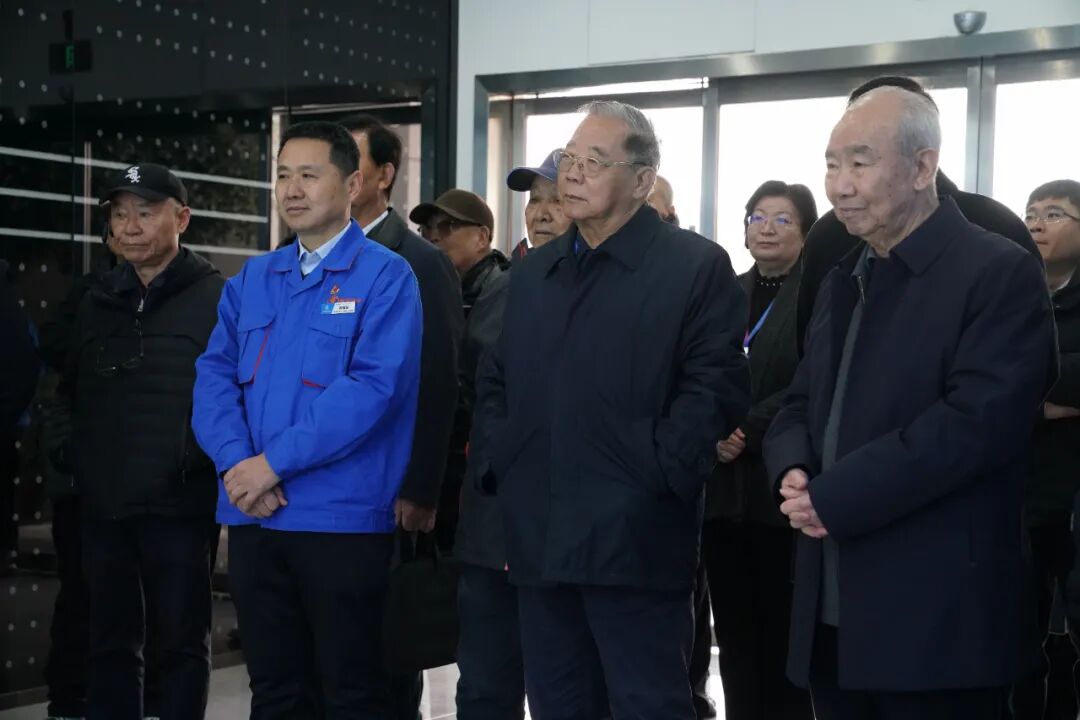
Third Suggestion: Further Intensify Efforts and Accelerate the Pace of Super Production and Intelligent Manufacturing
As a commercial vehicle enterprise, building a strong product matrix is crucial. Shaanxi Automobile Group's 2035 strategy includes phrases like "expand commercial vehicles, refine specialized vehicles, and strengthen components." I have an immature suggestion: expanding is not as beneficial as optimizing, summarized as optimizing commercial vehicles. Do not anticipate significant growth in commercial vehicles during the "15th Five-Year Plan" period; instead, consider the commercial vehicle market from an industry-wide and demand-side perspective.
China National Heavy Duty Truck, Foton Motor, FAW Jiefang, Dongfeng Commercial Vehicle, and others are all planning for the "15th Five-Year Plan" and aim to expand. How large can the market become? Annual sales of 1 million units may represent a phased demand and the upper limit of the commercial vehicle market, which may fluctuate between 800,000 and 1 million units in the future, not a substantial volume. However, focusing on "excellence" aligns with national strategies. Whether it's new quality productivity or high-quality development, emphasizing "excellence" is preferable to emphasizing "expansion."
There is significant room for "excellence." Look at established commercial vehicle giants like Mercedes-Benz, Scania, and Volvo. From chassis to body, from appearance to performance, we must conduct thorough benchmarking. Are there still gaps? How large are they? These gaps represent our potential for improvement. Of course, this is not just a gap for Shaanxi Automobile Group but for the entire Chinese heavy truck industry compared to others.
How can we enrich our product matrix through intelligent manufacturing and super production? It boils down to three phrases: limited platforms, effective categories, and high-quality, diverse products.
The logic behind these three phrases is crucial.
There should not be an excessive number of platforms, but the categories must be effective. Creating a category means innovating within that category. When Jianghuai Automobile Group faced numerous difficulties, I proposed "one vehicle per region" and "one vehicle per country" for overseas expansion, emphasizing not just "going out" but also "going in" and "ascending."
Intelligent manufacturing should not be mere rhetoric; it should serve the overall needs driven by market demand or product innovation. It should adapt to different application scenarios in various regions, truly achieving targeted results.
Fourth Suggestion: Implement a Cross-Integration Strategy During the "15th Five-Year Plan" Period
Strategically, vertical integration should be pursued.
In the passenger vehicle sector, BYD has achieved the pinnacle of vertical integration. BYD has its own model, and Tesla has its own, with one focusing on full-stack software self-research and the other on thorough hardware development, known as large-scale, high-volume production.
This is crucial for Shaanxi Automobile Group's "15th Five-Year Plan" and an important revelation for optimizing commercial vehicles. Products can be integrated to improve synergistic efficiency, utilizing limited resources for meaningful endeavors. Vertical integration should follow these two directions rather than attempting to do everything.
In the past, developing fuel vehicles without engines was a long-standing pain for Shaanxi Automobile Group. The era of electrification and intelligence provides an opportunity for Shaanxi Automobile Group to directly switch to a new track and venture into electric drive systems, pursuing vertical integration around electric drive systems.
Specifically, for electric drive systems, the three control software components—BMS (Battery Management System), MCU (Motor Control Unit), and VCU (Vehicle Control Unit)—are crucial. Can these be developed in-house, or at least the core components?
Recently, I've expressed a viewpoint on various occasions: some say electrification is the first half, and intelligence is the second half. I believe electrification is the entire game.
Firstly, data synergy is crucial. Motors involve material and lightweight issues with significant room for improvement. Batteries involve solid-state issues. Most importantly, the data system undergoes constant iteration.
Secondly, user application scenarios impose requirements on vehicle data system iteration, which is fascinating.
Therefore, vertical integration should have clear objectives. Why pursue integration? Synergistic effects—electrification provides an opportunity.
It should also be recognized that the gross profit margin of complete vehicles will significantly increase. If vertical integration is successful and the self-made rate improves, the gross profit margin of complete vehicles will rise. Why does Yutong Bus make money? The reasons are simple: high quality and large volume, coupled with effective vertical integration. Vertical integration in core components provides innovation space and platforms. Much innovation occurs through sudden changes. Vertical integration is a crucial opportunity for Shaanxi Automobile Group to achieve a significant leap during the "15th Five-Year Plan" period.
Another aspect is vehicle lightweighting. I've observed overseas that the cross-sections of heavy truck frames in Europe and the United States are not as large as ours, and their steel plates are not as thick as those used domestically. Overseas heavy trucks adopt new materials, and their box-type reinforcement structures and shapes enhance performance and reduce weight. Domestic heavy trucks mostly use laminated reinforcement structures. There is still much room for improvement in vehicle lightweighting, including chassis suspension systems.
Electrification optimization, combined with lightweighting, can position Shaanxi Automobile Group at the forefront of the industry in terms of energy efficiency during the "15th Five-Year Plan" period. Commercial vehicles are money-making machines; reducing energy consumption leads to profitability. Saving money is equivalent to earning money.
Fifth Suggestion: Collaborate with Huawei, Horizon Robotics, and Others to Develop a Comprehensive Intelligent Planning
Trends determine strategy, and strategy determines everything. I agree with this statement.
The current major trend is artificial intelligence. Everyone talks about it, but have we all realized that in a few years, AI will transform all industries, leaving only AI enterprises and those empowered or integrated by AI? Ultimately, only these two types of enterprises will exist, with others largely disappearing. This sense of urgency is crucial.
Under this premise, how can AI professional models penetrate and empower the entire industrial chain, from product R&D to intelligent manufacturing, supply chain to marketing systems, and brand promotion? There is significant potential in this area.
Regarding intelligence, is it possible for Shaanxi Automobile Group to develop a comprehensive planning and form strategic partnerships with ICT enterprises like Huawei, including Horizon Robotics, to maximize resource allocation efficiency? The intelligence of commercial vehicles differs significantly from that of passenger vehicles. Spending money does not guarantee good results, but not spending is not an option. Clear strategies are needed for trade-offs.
(The author is the former chairman of Jianghuai Automobile Group. This article is based on his speech at the exchange symposium held by the China Automotive Industry Consultation Committee at Shaanxi Automobile Group on November 17, 2025, and was organized by Bangning Studio according to the recording.)




